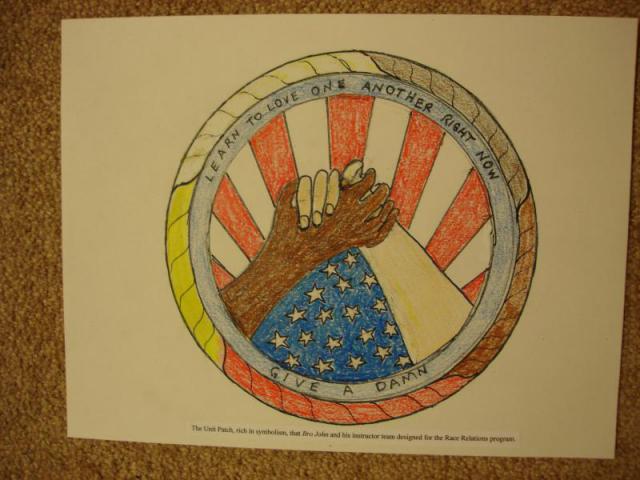February, Black History Month, carries special meaning for me. My duty as officer-in-charge of race relations opened my eyes to racism - especially institutionalized forms of it - whether in test bias, product preparation or accounts of history. To give just one example: when I was overseeing the design of a unit patch for our 635th Combat Support Group Race Relations Section, I brought the finished design to a local tailor shop near U-Tapao, Thailand. The patch consisted of a black hand and a white hand clasping each other with the U.S. flag behind them, ringed by five colors of races (black, brown, yellow, red, white) and with some slogans. When I saw that the white hand was pure white, I said, "Would you make it more flesh-color?" This statement I made in the presence of a black NCO with me and a Thai tailor of light-brown skin color. Three colors of skin in the room. (What exactly is flesh color under such circumstances?) It reminded me of the "flesh"-color crayon common in Crayola sets in the 1950s, and maybe into the 1960s until it was finally renamed "peach" color. The Crayola Company probably had no intention of excluding other races in naming its crayon "flesh" color. Neither did I in Thailand. How insidious are racial undertones in life.





